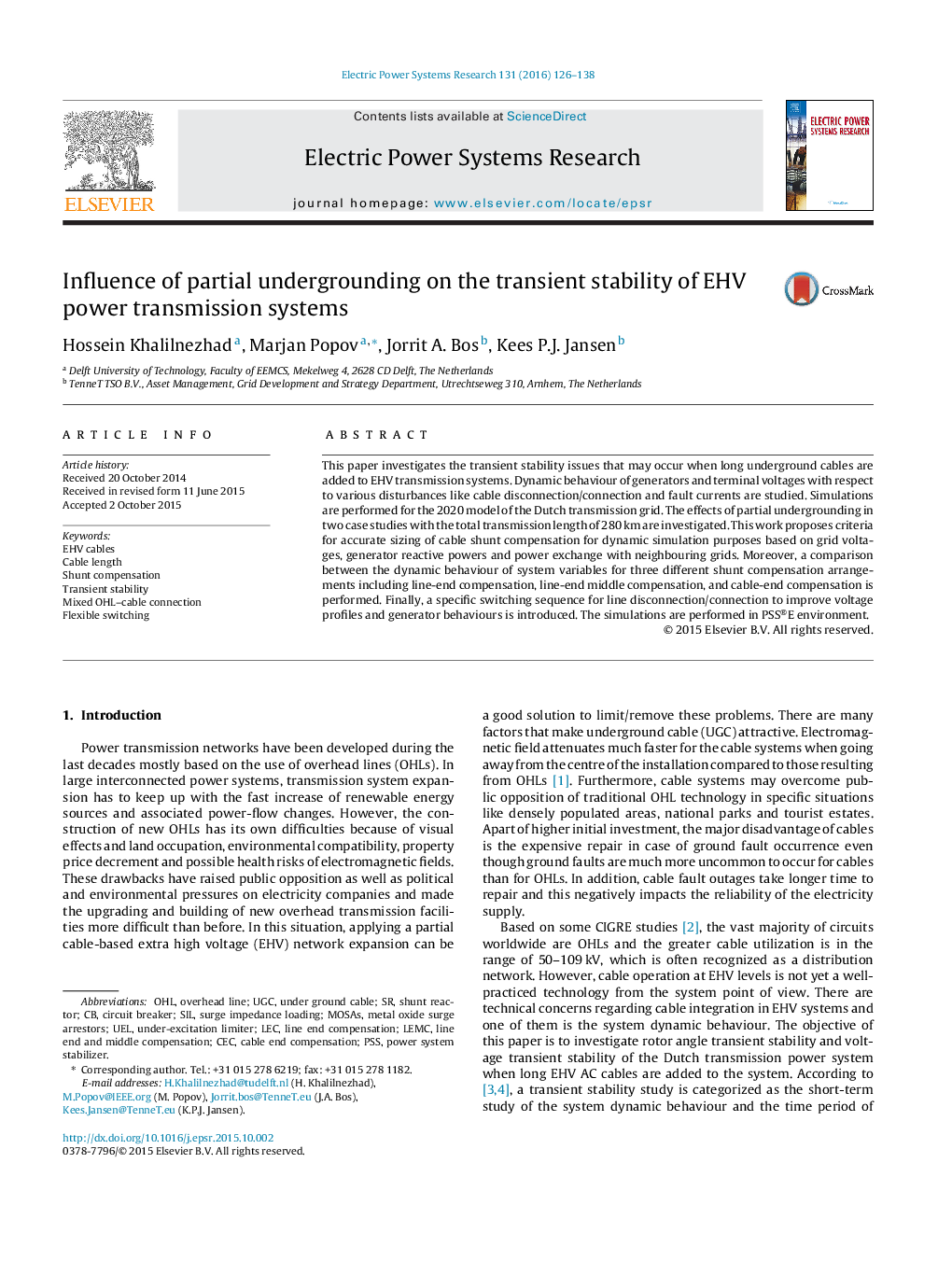| Article ID | Journal | Published Year | Pages | File Type |
|---|---|---|---|---|
| 704345 | Electric Power Systems Research | 2016 | 13 Pages |
•Transient stability study of a large and real EHV system with several interconnections and realistic load-flow dispatch.•Use of an accurate dynamic model including models of all components such as governors, excitation systems, loads, and etc. (see Appendix A).•Determination of influence of long EHV cables switching on the transient stability of a realistic grid.•An investigation of the influence of different shunt reactor arrangements on the system dynamic behaviour.•An implementation of a novel flexible switching sequence methodology, which leads to the overvoltage amplitude decrease up to 10%.
This paper investigates the transient stability issues that may occur when long underground cables are added to EHV transmission systems. Dynamic behaviour of generators and terminal voltages with respect to various disturbances like cable disconnection/connection and fault currents are studied. Simulations are performed for the 2020 model of the Dutch transmission grid. The effects of partial undergrounding in two case studies with the total transmission length of 280 km are investigated. This work proposes criteria for accurate sizing of cable shunt compensation for dynamic simulation purposes based on grid voltages, generator reactive powers and power exchange with neighbouring grids. Moreover, a comparison between the dynamic behaviour of system variables for three different shunt compensation arrangements including line-end compensation, line-end middle compensation, and cable-end compensation is performed. Finally, a specific switching sequence for line disconnection/connection to improve voltage profiles and generator behaviours is introduced. The simulations are performed in PSS®E environment.
